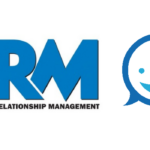
post
April 9, 2015
Texting Isn’t Just for Kids
“My kids would love that!”
I heard that recently from a middle-aged businessman when I told him that customers can now text businesses over their existing phone numbers. It’s not that he’s wrong (his kids would, in fact, love that), it’s just that he doesn’t understand how truly ubiquitous text messaging is. (And, by the way, that same guy admitted to text messaging on a daily basis himself.)
We can understand this reality by looking at the numbers. Far from being a technology used just by teenagers, texting is now common across all demographics. According to Pew Internet, 91% of all American adults owns a cell phone. And, of these, 81% use text messaging, making it the most popular activity. Let’s break this down by age group:
| Age | % cell phone owners who send or receive text messages |
| 18-29 | 97% |
| 30-49 | 94% |
| 50-64 | 75% |
| 65+ | 35% |
So if the vast majority of adults are using text messaging on their phones, why are we so quick to associate the activity with just the young? Well, first of all, the number of texters in the youngest age bracket is a few percentage points higher than in the next bracket. So there’s that. Plus, the young are known for their sheer quantity of texting. Experian discovered that 18-24-year-old American smartphone owners send and receive an average of 3,853 texts per month. That’s 1600 more than the number sent by 25-34-year-olds. No wonder we get the impression that young adults are the texters.
But research shows that older people love texting, too, and are very willing to engage in that channel. That number will grow even more as the current population ages. Plus, older Americans own pretty cool technology. In fact, according to Nielsen, for the first time ever, the majority of Americans in all age brackets now own smartphones—including those 55 and over.
Companies who don’t fully take advantage of their texting capabilities are not only missing out on almost all of their under-50 market, but also 35%-75% of the 50 and older cell phone crowd. That is a huge market share to ignore.
So how could this impact business? Let’s look at the medical field—known for catering to a high percentage of those over 50. I met with an administrator at a doctor’s office who has the frustrating job of rescheduling appointments. The task often turns into a game of phone tag, taking 2-3 voicemails before connecting. At another office, a staff member sits in his car during breaks, just to escape the incessant ringing of the telephone.
Both of these offices would greatly benefit from focusing on their text strategy and text-enabling their customer support. That way, patients can schedule their appointments or ask questions through text. In fact, one staff member admitted that patients ask several times a day if they can use text instead of calling.
Texters of all ages would prefer to use texting rather than voice for customer support. A study conducted by Harris Poll and commissioned by OneReach found that 64% of Americans who text would prefer to use text over voice for customer service, jumping to 76% for millennials and 86% for students over 18. But young people aren’t the only ones who would rather use texting: 70% of parents who text would prefer to use texting for customer service, and over 50% of baby boomers who text would prefer to text to phone for customer service as well.
The reality is that texting is fast becoming the assumed method of communication for all ages. Is your business ready?
To learn more about customers’ preference for texting for customer service, download the 2014 Harris Report here.
Photo by Startup Stock Photos. Edited.
Stay up to date
Latest Articles




